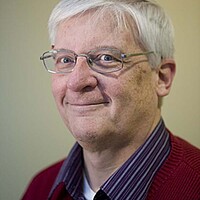Could you live below the line?
Loading...
In America, laying out $1.50 might buy a cup of morning coffee – if you find a bargain.
But for 1.2 billion people in the world, about $1.50 is all they have to spend in a day for … everything, including all their food and beverages.
It's a thought that's nearly inconceivable to most people in the developed world.
That's why the Live Below the Line project aims to help people understand extreme poverty more personally. For five days, April 28 to May 2, people are being invited to spend only $1.50 on food and drink per day and use the money saved to make donations to poverty-fighting charities.
"We want it to be a challenge people take on in the workplace, at home, at school, or in their faith community," says Hugh Evans, the co-founder and chief executive of The Global Poverty Project, which is sponsoring Live Below the Line.
The annual event has been held since since 2010 and has already involved 50,000 participants in more than 70 countries, raising $10 million for charities around the world. Charitable partners in the United States include the Global One Foundation, Kiva, Heifer International, Opportunity International, The Hunger Project, and the World Food Program USA.
Equally important to fund-raising is the goal of getting Americans and others in wealthy countries to think and talk about extreme poverty – and how to end it.
Mr. Evans, an Australian, has been passionate about the subject since his teenage years.
"I started when I was 14 years old," he says. "It's definitely a life's calling for me. By the time I was 22 years old I'd lived in developing communities all over the world."
He now has a simple goal: "I'm not going to rest until we've seen an end to extreme poverty by 2030."
Eliminating extreme poverty for 1.2 billion people in the next 16 years might seem like a daunting task. But Evans points to the remarkable progress that has been made in recent years: Just since he was born, extreme poverty was halved from 52 percent in 1981 to 25 percent in 2005 and, most recently, 23 percent.
"I really believe that every generation is called upon to leave a great mark on this planet," he says. In the late 20th century Nelson Mandela endured decades in prison on his way to ending apartheid in South Africa. For 27 consecutive years in the early 19th century, British politician William Wilberforce introduced a bill in Parliament to end the slave trade: It was rejected the first 26 times.
"No one ever said that the job [of eliminating extreme poverty] was going to be easy," Evans says. "If it were easy, we'd have already seen an end."
While Live Below the Line might seem to be a five-day fast, Evans is sometimes amused at how people find clever ways to feed themselves.
"You're allowed to buy your own seeds and plant your own food," so those who plan (and plant) ahead can use their gardens as a food supply, he says. And families or other groups can pool their $1.50 per day allotments to buy in bulk. "You hear all these amazing stories about how people have tackled the challenge," he says.
The charities associated with Live Below the Line provide models for how to defeat extreme poverty, Evans says. He sees the way forward as "the six and the three."
Six changes need to be made: improve and expand food security, education, health care, water and sanitation, micro-finance and other job-creating programs, and empower women. The three ways to achieve these goals are through humanitarian aid, trade, and good governance within nations.
"If you have these six and three, I believe you can make a big impact on extreme poverty," he says.
As individuals, Americans "have a wonderful tradition of philanthropy," says Evans, who now makes his home in New York City. But the governments in places such as Britain and the Scandinavian countries are far more generous than the US government in terms of giving as a percentage of gross national income.
Evans would also like to see more engagement in charitable giving from America's new wealth, such as in Silicon Valley.
"I think it's crucial that the tech community and the new generation of wealth in America steps up," he says.
• For more visit www.globalpovertyproject.com and www.livebelowtheline.com.






